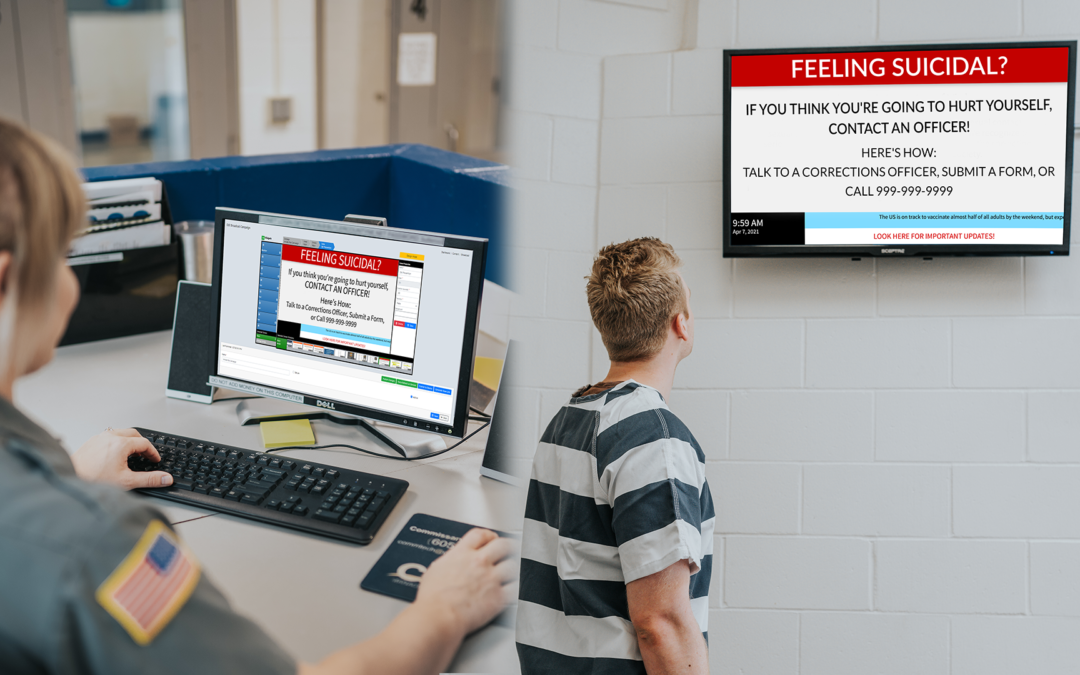Content Broadcasting is a digital signage system used for communicating important information to the public and inmate population.
Here are three reasons Content Broadcasting is a must-have for your facility:
Keeps Your Facility Compliant
A sizable segment of the inmate population in county jails suffers from mental health issues. The most recent data on a national scale shows that more than 44 percent deal with mental illness.
Along with preserving safety and security, limiting potential liability in case of legal action against your facility is crucial.
In the days before Content Broadcasting, information about jail resources was strictly found in the inmate handbook and kiosks.
To an inmate going through a mental health crisis, that information can end up out of sight, out of mind.
This poses risks to safety and security, and in the event of an incident, can give rise to litigation.
Leaving mental health risks aside, facilities also get dragged into litigation when inmates feel they’ve been denied access to information or care.
Julio Algarin knows firsthand that jails are common targets of litigation.
“If there’s a reason to sue the jail, [someone] will find it,” Mr. Algarin says, which is why the recently retired warden equipped his jail, the Montgomery County Correctional Facility (PA), with Content Broadcasting and has become a vocal proponent of it.
He found that, as soon as his Content Broadcasting TVs went up, the likelihood of litigation went down.
According to Mr. Algarin, Content Broadcasting gave him the means to disseminate “pertinent information to the entire inmate population without delay,” ensuring facility compliance.
Keeps Inmates and Staff Informed
Balancing the needs of correctional staff as well as inmates is a top priority for jail administrators.
Your staff doesn’t have time to constantly field questions about jail policies and procedures, but inmates’ needs must also be met.
That’s where Content Broadcasting comes into play.
Content Broadcasting encourages inmates to seek out information without staff involvement.
For inmates still learning how things are done in your facility, the continuous flow of information can help with comprehension.
Regular exposure to facility-specific information ensures inmates understand what resources are readily available to them and how processes work.
This makes for a more informed inmate population and a safer facility.
Digital signage in staffing areas can also serve as a passive learning tool, reminding staff of officer safety.
All of these factors combine to create an environment where communication is easily shareable and accessible.
Eliminates Paper Clutter and Waste
It wasn’t long ago that every jail in the U.S. provided pertinent information to inmates via paper postings and bulletin boards
These days, more and more facilities are going the digital route with sharing information, and it’s no wonder why.
Paper postings create metric tons of clutter and waste.
Studies on the breakdown of waste produced by correctional facilities illustrate the extent of the paper problem.
Researchers have consistently found that paper makes up the bulk of waste that facilities dispose of.
Ultimately, clutter and waste subtract from revenue and add to disorganization.
And when it comes to educating inmates, a cluttered bulletin board is counterproductive.
Important information needs to be visually appealing and digestible for inmates to read it.
Be in the know about corrections news by checking out our Paper.li!

